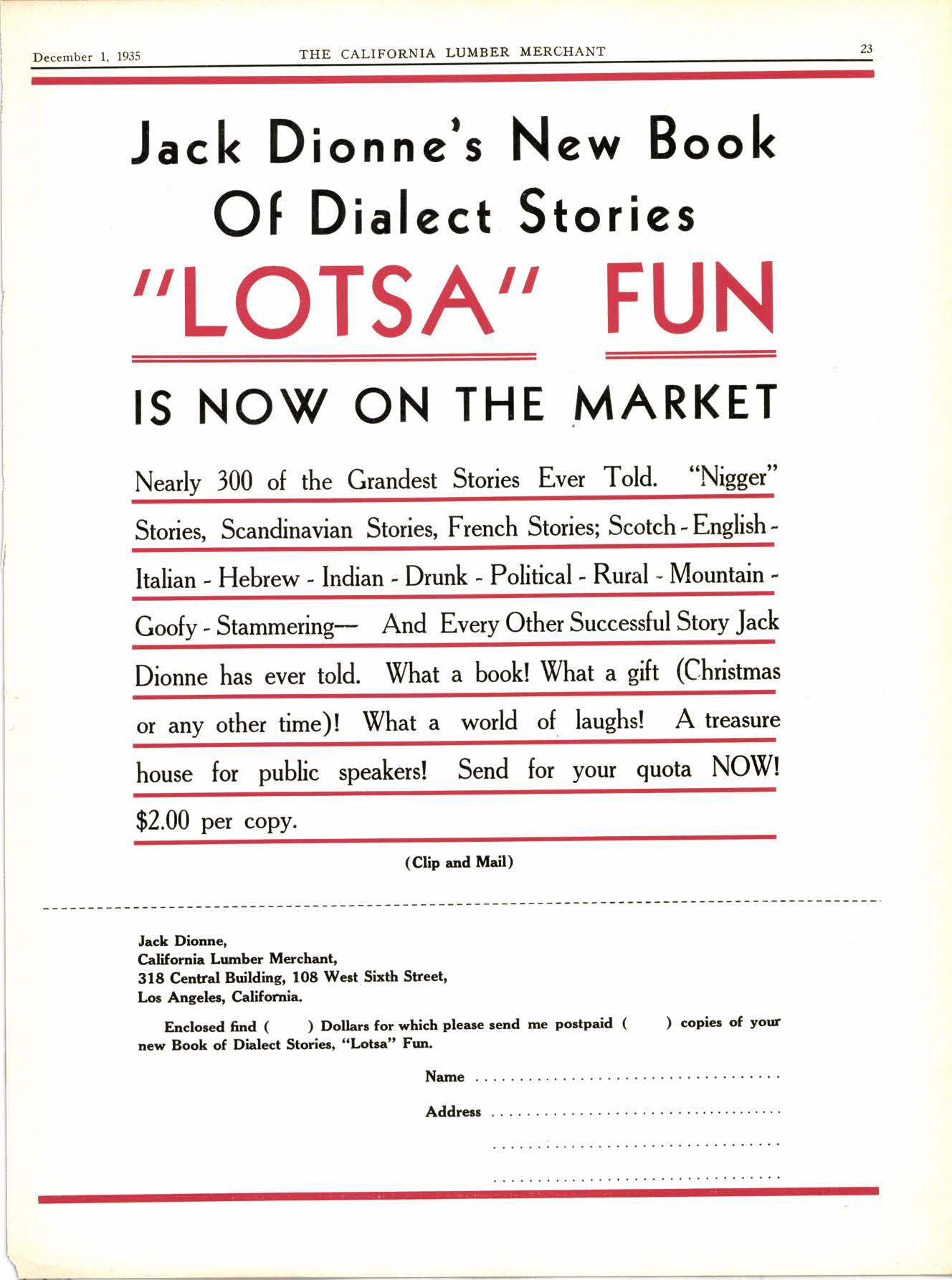
2 minute read
Trade Agreement Reduces Canadian Lumber Tariff
President Roosevelt announced the text of the Canadian Re'cipro'cal Trade Treaty on November 77 which calls for a 50/o reduction in the import duty and excise tax on Canadian lumber brought into the United States. The treaty becomes effective January 1; 1936, and will remain in for,ce until December 31, 1938, and indefinitely thereafter unless six months' notice of intention to terminate it is given by either party.
The imports of lumber from Canada in 1929 were more than $37,000,000 in value. Lumber entered free prior to 1930. In that year a duty of $1.00 per thousand board feet was imposed on lumber of the major softwood species, and by the Revenue Act of 7932 a tax of $3.0O was imposed on all lumber, additional to the duty. As a result of this action, and of the reduced demand for lumber during the depression, imports of Douglas Fir nearly ceased, though considerable quantities of other softwood lumber continued to enter. In the case of Douglas Fir and Western hemlock 250,000,000 board feet will be allowed to enter at the redu,ced rate.
The concessions rnade to Canada on lumber products undelthe new agreement are as follows :
Douglas fir and Western hemlock, per M feet. Old rate $4.00; new rate $2.00. Reduced duty to appll' to no more than 250,000,000 board feet per calendar year. Imports in excess of this quota must pay the old rate.
Spru,ce, pine, Eastern hemlock, larch and fir other than Douglas fir. per M feet. Old rate $4.00; new rate $2.00. Other softwood and hardwood, not spe,cifically provided for, if not balsa or teak, per I\4 feet. Old rate $3.00; new rate $1.50.
Flooring of maple (except Japanese maple), bir,ch and beech. Old rate 8/o ad valorem ; new rate 4% aa valorem.
Shingles are on the free list but importations are limited to 25/o of the United States ,consumption. Among the other forest p.roducts- bound on the free list are wood pulp, logs, round timber, firewood, lath, etc. (excluding,cabinet wood), posts, poles, pickets, palings, hoops and staves.
Wilson Compton, secreta,ry-manager of the National Lumber Manufacturers Association, iJsued a protest on the new lumber tariff and excise duty reductions on lumber. His statement appears in this issu6.
Col. W. B. Greeley, secretary-manag.er of the West Coast Lumbermen's Association, in a statement given out at Seattle, Wgsh., said that Oregon and Washington lumbermen were "duml:founded" by the 5O% tarifi and excise tax redu,ction.
"I.t appears to be the most inconsistent policy by the administration," he says.
"IJnder the dire,ct pressure of the administration, West Coast lumbermen have been led step by step until the industry is todal' paying the highest average wage of any industry in the United States. at the same time hours have been reduced from 48 to 40 hours.
_ "By.the treaty, the administration has exposed the West Coast lumber industry to severe competition from another country produ,cing identi,cal items of lumber manufacture butpaying its labor 3O/o less in wages and employing u'orkers substantially longer hours.
__''The quota of 250,000,000 board feet of Douglas fir and Western hemlock allowed to be imported at $2.00 per thousand feet tempers the blow very lightly."
Emphatic protest on behalf of the Southern pine industrv against those portions of the agreement efiecting a 5O/o 16duction in import duties and excise tax on Canadian lumber brought into the United States wps voiced in a statement issued by H. C. Berkes, secretary-manager of the Sout!ern Pine Association.










